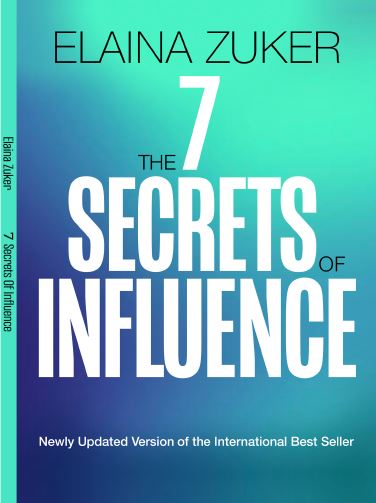The Proposal – How I created a winning strategy and scored a big contract
Several years ago, my consulting company in New York, got word (via the informal gossip mill at the company) that AT&T was going to send a Request for Proposals (RFP) out to several vendors for a large consulting and training contract.
My competitive advantages – I had already worked with several divisions of the company and they had used our training I understood the culture – its habits, strengths, and weaknesses and “lingo”. My work had gotten consistently good ratings from the groups I had worked with. In fact, one of the best compliments I got was from a participant in one of our classes who didn’t know I was not an employee of the company; he said I had a “bell-shaped head”. (Translation – “you seem like one of us”) And my“Influence” program was getting a solid reputation among business and training professionals.
My competitive disadvantages – I didn’t know who the other contenders were. Even though I had done “opposition research” to determine the pricing of my competitors’ programs, I had no way of knowing how low they would bid just to get the contract. I was a small company (and no amount of positive press, professional-looking materials, expert trainers and high-quality products could conceal that fact).
- Would the decision-makers worry that my “lean and mean” operation could not deliver on a huge contract?
- Who were the decision-makers, and how would they decide?
- What were their decision-criteria?
Preparing the Proposal
I received the RFP – a very official-looking white binder with bright blue lettering. In about 100 pages, there were descriptions of the company, its history, its changing culture, future challenges, etc. There were 10 sections, each indicated by a bright blue tab with white lettering.
One of the sections described the project at hand and the criteria for selecting a vendor, along with the names of the committee members.
I started to prepare my presentation with my team armed with our research. I had the requisite number of copies printed well in advance of the meeting.
Prepping for the Pitch
When I arrived at the building in New Jersey (having spent the night before at a hotel one mile away, afraid of possible traffic jams between Manhattan and New jersey) I was escorted to a “holding area” where there were about a dozen people from different vendor companies. They were in clusters, all abuzz about their upcoming “pitch moment”.
When my scheduled time arrived, I was shown into a meeting room where 8 people were seated at a long table. I knew I had 20 minutes to make my case.
I had already checked my Power Point slides on my own projector (we don’t use projectors anymore but the principle still abides – whenever possible, bring your own equipment!) Nothing says “not ready for prime time” than a technical mess up (even if it’s on their equipment) and it will also throw you off your game.
Know Your Audience
I greeted the group, making eye contact with each person and used five of my allotted 20 minutes to ask a few questions. I assumed that at least some of the group assembled here may not have been part of the original committee which had written the criteria for the RFP, so I wanted to learn more about their individual decision-making strategies.
I asked questions about various attributes and aspects of any training program “how important is price to you”? and watched the person who answered, as well as the nods or body language of the others in agreement or disagreement. This gave me valuable clues, when I made my presentation, about who cared about what criteria, so I could emphasize various features and benefits of our program. It also gave me the opportunity to improvise and omit sections if they no longer seemed relevant or interesting to this group. This technique also helps to warm up the room, so you don’t feel like you’re facing a Parole Board or the committee evaluating your application for admission to a university. And it shows my facilitative style and comfort level with a group.
Delivering a Proposal that Wins; Details Count
Then, I handed out my Presentation Binder (the response to their RFP document). I waited this long because I knew their attention would immediately go to flipping through it, distracting from my questions if I handed it out as soon as I started.
What did my presentation binder look like? Well, it was a white binder, with bright blue lettering. It had 10 sections, divided by bright blue tabs with white lettering. “Pandering”, you might say. Maybe so, but one woman said, “this looks familiar”, and I could see in peoples’ body language that they felt comfortable with the look of it.
During my presentation, each time I focused on a particular benefit or advantage I looked at the person who had expressed (verbally or non-verbally) a positive interest in that feature. I completed my presentation in exactly the 15 remaining minutes (you don’t want to go over your time and have to be escorted out by security)
A Winning Proposal
The end of the story? Well, I wouldn’t have spent this time telling you all this if it didn’t have a happy ending!
About a week later, we were notified that we had won the proposal and the contract for our “Secrets of Influence™” program. And as for being a “small” company, they wanted to choose an entrepreneurial, flexible and small contractor, so what I thought was a liability ended up being a great asset!


